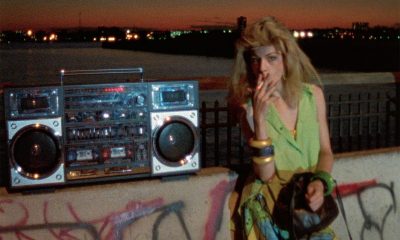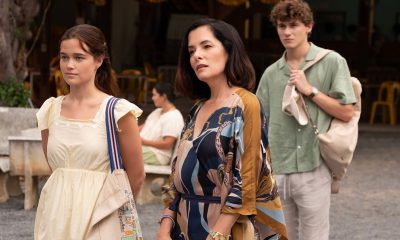Books
Celebrating Arab and Muslim heritage, art, gastronomy
Three new books open a window to influential cultures
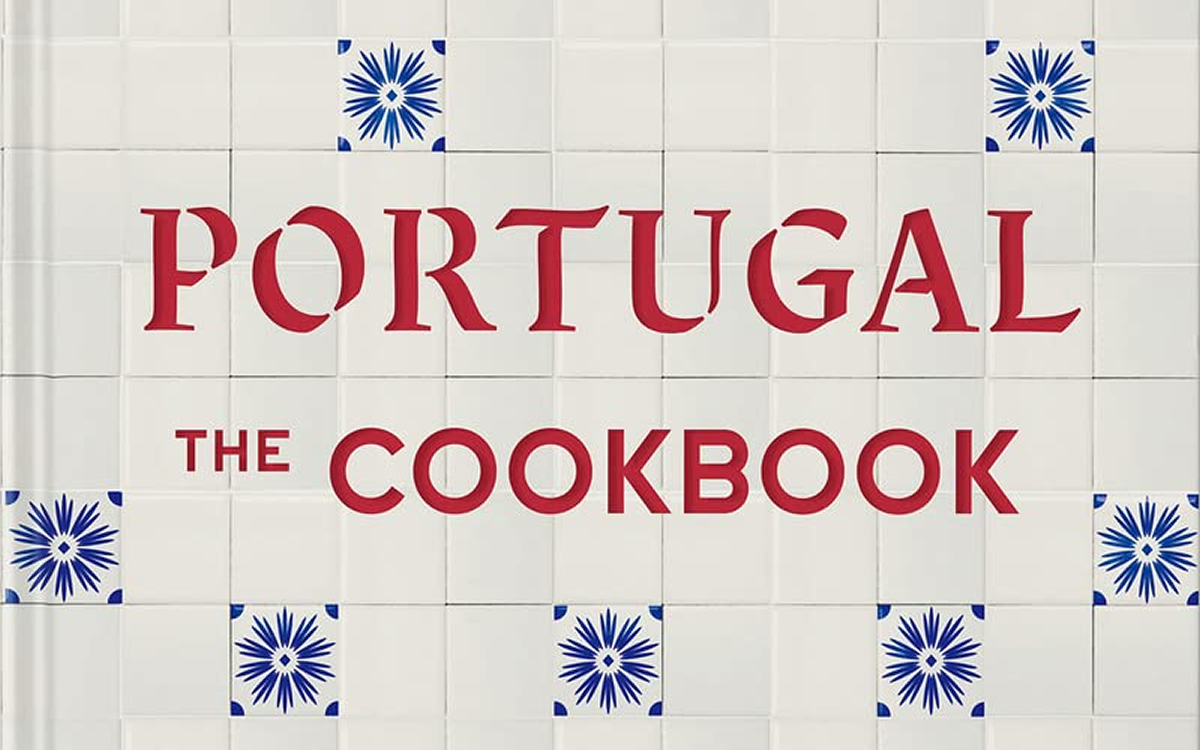
As a college student, I hungered for Arab and Muslim representation. Prejudice against our communities was mainstream and demoralizing. Things, however, can sometimes change sooner than we expect.
Although Muslims and Arabs are still maligned, it is no longer as widespread and is often counterbalanced by allyship and, crucially, Muslim and Arab representation. From Hulu’s “Remy,” Netflix’s “Master of None,” HBO Max’s “Sort Of,” to the upcoming premiere of Disney+’s “Ms. Marvel” to Muslim characters on “Love Victor,” “Never Have I Ever,” and “Genera+ion,” Muslim characters and creators are now common. And these creators are diverse, proud, and often queer.
Mahersalah Ali is a two-time Oscar winner (one for the Black queer Best Picture winner “Moonlight”) and Riz Ahmed is the first Muslim to be nominated for Best Actor; he won an Oscar this year for a short film taking on British xenophobia, and spearheading an initiative to boost Muslim representation in Hollywood from screenwriters to actors.
From starving to satisfied, it has been quite a transformation in American culture. And it’s not only TV and film. Political representation isn’t novel anymore. I still remember when former Rep. Keith Ellison was asked on CNN to prove his loyalty by the conservative host Glenn Beck. Today, Reps. Ilhan Omar and Rashida Tlaib are progressive trailblazers. Irvine, Calif., has a Muslim mayor in Farrah Khan. Joe Biden has nominated the first Muslims to the federal judiciary, one has been confirmed and the other, civil rights lawyer Nusrat Choudhury, awaits Senate confirmation. And Biden, lest we forget, said “inshallah” (God willing) on the presidential debate stage. “We’ve made it,” I want to shout. But I know we’re still fighting for full normalization in American life.
Hence my excitement over three new books (two cookbooks and one art text) that feature Arab and Muslim heritage, art, and gastronomy.
Arab roots of Portuguese cooking
“To these new rulers [the Moors], cuisine was an art, and food a gift from God that should be consumed in moderation and shared with those in need,” writes Leandro Carreira, the author of “Portugal: The Cookbook.” It’s not surprising to learn that Arabs and Berbers shaped the evolution of Portuguese cuisine, but what’s striking is the nature of its legacy. In this cookbook of 700 recipes, half draw from the Moors.
When Moors conquered the Iberian Peninsula (Portugal and Spain) they brought with them not only warriors and administrators but architects, astronomers, poets, and, inter alia, cooks along with cookbooks, such as the Medieval “Kitab al Tabikh.”
The Moors introduced hydraulics that irrigated the farmland (along with orchards and leafy gardens) and beautified the land by planting citrus trees both for the fruit and scent. The list of crops introduced by Moors includes eggplant, artichoke, carrot, lentils, cucumber, and lettuce. The latter would later christen the residents of Lisbon, who are colloquially known as Alfachinhas (“little lettuces”). Moors popularized sour oranges, apricots, dates, melons, and watermelons; spices such as pepper and ginger; pickling of olives and nuts; sour marinade to preserve fish; rose water and orange blossom. The Moors’ vinegary salads were the precursor to gazpacho. The introduction of sugarcane later severed Portuguese colonization and fueled the slave trade, and transformed sugar from luxury to staple.
Naturally, the North African rulers brought couscous, the main consumed wheat until the late 16th century. To this day, northwestern Portuguese villagers prepare couscous using the methods and utensils introduced by Berbers 900 years ago.
The Moors cultivated hospitality and conviviality at the table along with the order in which food is served: soups followed by fish or meat and concluding with sweets. The Arabs’ cousins, the Jews played their part in shaping Portuguese cooking, too. Jews prepared their post-Sabbath meal by laying aside a slow-burning stew of meat, chickpeas, collard greens, hard-boiled eggs, and vegetables; today, the Portuguese call it Adafina. Jews introduced deep-fried vegetables and Portuguese missionaries later brought them to Japan and (voilà!) tempura.
In its history, “Portugal” evokes our interwoven humanity.
Arabiyya: Cooking as an Arab in America
The past few years have seen cookbooks with narratives of culture and personal journeys foregrounding recipes — many focused on Arab culture. “The Gaza Kitchen” by Laila el-Haddad and Maggie Schmitt and “The Palestinian Table” and “The Arabesque Table” by Reem Kassis, for example. To this list, we can add “Arabiyya: Recipes from the Life of an Arab in Diaspora” by the James Beard finalist Reem Assil.
For connoisseurs of Arab food in America, Reem is no stranger. Reem’s California, a bakery in Oakland and San Francisco, has acquired temple status for its use of California’s ingredients in the service of Arab dishes. A few years ago, the New York Times praised Reem’s as an “Arab Bakery in Oakland Full of California Love.” (The bakery was, sadly, the target of vulgar anti-Palestinian prejudice for its mural of Palestinian activist Rasmeah Odeh.)
Food was Reem’s saving grace. Facing a debilitating digestive disorder, and the wreck of familial stress, Reem left college and headed to the Bay Area live with her Arab uncle and Jewish aunt. Soothed by California’s climate, nature, and ingredients, she found mental and physical healing — and roots and purpose.
“Arabiyya” is a guide to California-based, Arab-rooted recipes alongside tales of Reem’s journey and her family’s. Her grandparents fled the Nakba — the 1948 “catastrophe” of the forced exile of roughly 750,000 Palestinians at the hands of Israeli troops — and the Naksa, the 1967 War that forced her family to decamp once more for Lebanon. The Lebanese Civil War led to one more flight to Greece, and finally, California.
Growing up American, Reem knew little of her grandmother’s resilience. After her sitty’s (colloquial Arabic for grandmother) passing, she pasted together tales from relatives of her grandmother’s determination to uphold Arab hospitality no matter where she landed. Her identity as a Palestinian was threatening both in Lebanon and America — but she walked with dignity. Arab hospitality meant that home was a safe comfort no matter the headwinds outside, and, at times, her grandmother went lengths to survive. A tale of sneaking out during a pause in fighting in Beirut became family lore: sitty couldn’t forget her lemons (who would serve fish without lemons?!) even after a rocket attack knocked her down.
Food’s healing and grounding became the thread uniting Reem with sitty. “I’ve come to realize that my grandmother, who loaded the table to its edges with tasty morsels of my favorite foods, lives through me,” Reem relates.
Reem’s journey to cook and bake as love and spontaneity opened a window to heritage — a family’s history and Arab pride. Her recipes (like the California Fattoush Salad where traditional tomatoes are swapped for oranges and citrus and fried sunchokes) overflow with love. “Arabiyya” is destined to be a classic among Arab-Americans.
Arab artists in their prime
Artists from the Arab world exhibiting in the West face a challenge: Our culture is ubiquitous in Western depictions but poorly understood; a dilemma for the artist who must inevitably “interrogate the stereotypes that spectators bring to the practice of looking at mythologized places,” in the words of critic Omar Kholeif in his review of the Abu Dhabi-born and NYC and Dubai-based Farah Al Qasimi.
Al Qasimi is one of five Arab artists featured in the new collection on “art’s next generation” entitled “Prime.” In “After Dinner 2” (2018), Al Qasimi captures the pressures of domestic life in her native UAE and the misconceptions westerners have about Arab domesticity. A mother stands behind her daughter kneeling on the couch while looking out at the window. The mother’s stance is recognizable to any child raised by an Arab mother: head tilted up and her arms stretched out — a plea for God’s mercy in the face of a stubborn child. The pink and white staging of the drapes and couch suggest the mother-daughter dispute is about marriage, the daughter having sights on another admirer. Neither the daughter’s nor the mother’s face is visible. The mother’s face overflows out of frame while the daughter’s rests behind the drapes. Al Qasimi’s photograph turns on its head the Western conception that Arab women are hidden “behind the veil;” their life is plain to see if one discards their preconceived notions and recognizes that mothers and daughters differ universally.
Gulf Arab states, soaked in oil and gas money, however, pander to Western standards. Alia Farid scrutinizes the imitation. Urbanization has upended life in the Gulf, including in the official representation of culture. Seeking to parade heritage, Gulf states are crafting historical narratives that embody less the realization of culture and more a contrived display that weaves together disparate artifacts, as Farid displays in a mock-museum exhibition titled “Vault” (2019). These exhibitions stand as staid advertisements — a defensive declaration: “We, too, have culture!” — placing together all manners of ancient and modern objects without telling a coherent story or inspiring new creativity.
In a juxtaposition, “At the Time of the Ebb” (2019) is a video installation documenting the celebration of Nowruz Sayadeen (Fisherman’s New Year) on the island of Qeshm, Iran. “We are brought close to culture at its grassroots level — the suggestion being that cultural life is built in communities as opposed to something to represent within the entanglements of a global museum industry, one that willfully neglects the culture it seeks to validate,” observe critics Hana Noorali and Lynton Talbot.
The Middle East’s wars and rivalries inform the work of Lebanese artist Rayyane Tabet, who works in Beirut and San Francisco. “Steel Rings” (2013) is a recreation of the Trans-Arabian Pipeline that was abandoned due to political upheaval but not before hundreds of miles of pipes were laid (and remain) underground. In Tabet’s exhibition, steel rings laid on the floor stand in for the pipeline’s route with engravings on the rings marking the locations passed underneath. The uncompleted pipeline is the only material project to exist between five regional nations. It is a sad statement on the region’s divisions that the only thing crossing that many borders is abandoned and buried steel. Humanization of the region’s troubles comes into relief in “Cyprus” (2015). The installation consists of a 1,800-pound wooden boat suspended from the ceiling. The boat was deployed by the artist’s father to flee Lebanon’s civil war but was unable to complete the journey to the neighboring island. Years later, the family found it on the coastline. Suspended in midair, solitary, the boat speaks to the anguish burdening people in the face of conflict — a hardship that is often insurmountable, like the boat drawback by the current. “Cyprus” centers our thoughts beyond the headlines — obscuring the human toil — and toward people struggling in their wake.
It is refreshing to see Arab artists creating thought-provoking art on their own terms. And so, the wheels of American life roll on as we crave our hearts on its road.
The Blade may receive commissions from qualifying purchases made via this post.
Books
David Stern’s ‘Elevator Boy’ is a visceral deep dive into Weho’s queer past, but serves as inspiration for its future
In today’s political and social climate, well-told stories like Stern’s are imperative for the queer community to understand what kind of trailblazing energy we come from, and what we can do to overcome.
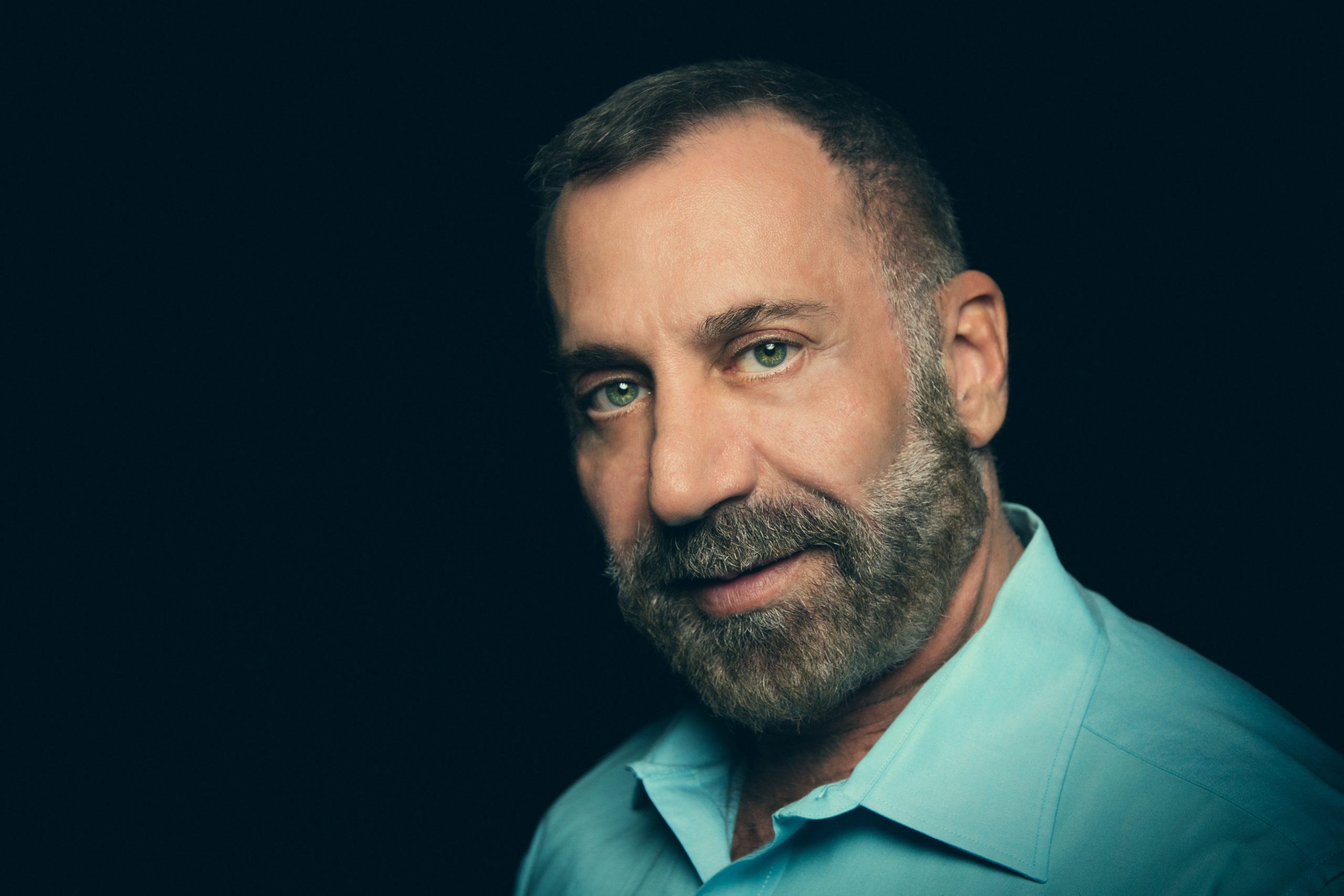
There was a time when every gay man in West Hollywood was walking around with either a copy of Frontiers or In Magazine, held tightly in hand. Not only did they feature a bevy of hot guys, but they also included queer celebrity interviews, hot topics, and a weekly photo diary of the community that every socialite thirsted to appear in. Beyond serving as queer pop culture’s pre-tech answer to social media, they were also brands that united a community that continued to lose members to the AIDS epidemic. Looking back, they weren’t just glossy magazines; they served as part of the glue that kept Los Angeles’ queer community together.
Much of the publications’ success was due to David Stern, who went from top salesperson to co-owner of both magazines. There wasn’t anyone in town who didn’t know Stern. He brought business sense and sincerity to the company and knew how to be the life of the party. He helped the magazines, and in turn, the community, thrive.
It’s hard to envision that version of David Stern as the young boy who showed up on Hollywood Boulevard, as a runaway, with literally no clothes or money to call his own. This young boy was running away from a volatile and abusive household where his sexuality served as his undoing; he was running away from the PTSD he acquired when his father fell down an elevator shaft to his death when Stern was just 15 years old. By the grace of a drag queen, perseverance, and the queer community that, when times get tough, can support its own.
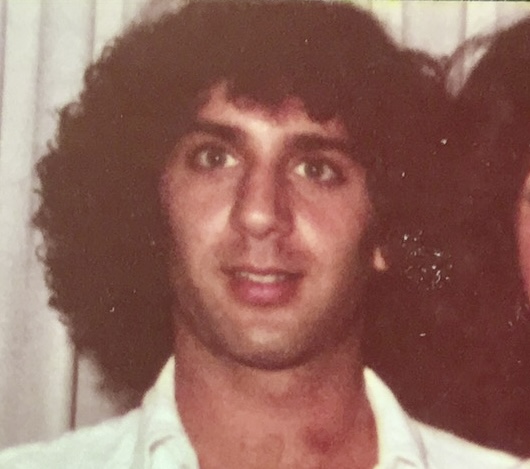
Elevator Boy, as told from an intimate and very naked point of view, tells the story of how he overcame a tumultuous past to become the man who ran a media empire. The story is not a bed of roses, and his rise to success was not without even more cuts and bruises. Stern does not shy away from the details here as he dives deep into his past. Drugs, sex, AIDS, friendship, and an unhealthy relationship with his mother all play roles in this tale.
Stern does not stop his story with his success. He is not afraid to tell the whole truth, and nothing but the truth, and shoves a spotlight into the seedy and illegal practices that were happening at his publications, unbeknownst to him. The empire was taken away from him, and eventually crumbled. Despite the challenges that Stern has faced throughout his entire life, the novel is not doom and gloom. There is a strong spirit here, a queer joy, that describes how our queer courage and perseverance will get us through. Our real family is made up of those whom we choose, who have been there for us unconditionally. This book is an inspiration. We can get through anything.
Stern started Elevator Boy over ten years ago, when he walked away from the Frontiers empire. It took that long for him to be able to face his past and put it down in words. The pain, the joy, the good, the bad, it is all here. What a moving and truly intimate life share that not only tells a compelling personal story of survival, perseverance, and hope, but also shares a slice of gay history that all generations should be exposed to.
In today’s political and social climate, well-told stories like Stern’s are imperative for the queer community to understand what kind of trailblazing energy we come from, and what we can do to overcome.
We had the opportunity to talk with Stern about it all. He did not hold back.
What was the final inspiration to tell your story?
I want to use my story to raise awareness that the rate of homelessness for LGBTQ youth is the same today as it was in the mid-70s, when I ran away from home and ended up on the streets. That rate is 120% higher than their heterosexual peers in the same age bracket.
Why is now the time and not before?
It’s been a little over a decade since my career came to an abrupt halt after 26 years of serving the community with my publications, Frontiers and IN Los Angeles magazines. Plus, I recently turned 65. If not now, when?
Your story is one of complete resilience. To what do you attribute your insistence on overcoming all your many challenges?
Thank you for acknowledging that. Since every chapter is a song title, I will refer you to it. “I Didn’t Know My Own Strength” by our dearly departed diva, Whitney Houston. (chapter 18) She sings my feelings with such passion. When I was younger, I would say, sheer defiance. As I’ve grown older, I would say that having tenacity and believing that everything happens for a reason are important. Try to learn, and in my case, re-learn the lessons from the journey.
What do you want our current younger queer generation to understand most about the era you came out in?
I would say the common thread of the teen runaways of the ’70s and the AIDS survivors of the ’80s and ’90s is how the LGBTQ community came together and took care of their own. From Sugar Love, the transgender hooker who rescued me on Hollywood Blvd at 16, to all the lesbians who stepped up to take care of their dying brothers in the face of AIDS. It was a community bonded in survival.
The AIDS epidemic plays a big part in your life. What comes to mind when reflecting on that time?
Since I think lyrically, I’ll say, “I’m Still Here” in E-flat, written by Stephen Sondheim. Now to be serious… AIDS taught me everything I know about life after death and how to communicate with those on the other side of the veil. It reinforced the lesson I learned the day my dad fell down the elevator shaft: life can change on a dime, and take nothing for granted.
It must have been bittersweet visiting your past. How did you mentally get through the writing process and rehashing difficult parts of your life?
This was a ten-year writing process. It started with me being so depressed that I couldn’t function. I’d morphed back into feeling like a worthless, homeless teen instead of a successful publisher. I began writing about that time period, which is the first chapter of my book, Hollywood Nights. From there, I wrote down songs that gave me a sense of memory, and I listened to them as I danced around my house, remembering while I laughed and cried at the absurdity of my life.
I will say that writing what became the second and third chapters of the book about my attempt at suicide sent me into two years of EMDR therapy to help with processing the memories. PTSD has created some interesting survival skills I was not aware I had.
Forgiveness can be difficult for many of us queer folk. Your relationship with your mother was tumultuous, to say the least. How did you get to a point of forgiveness, and why was that so important?
I think a bigger question is, how did my mother get to a point of forgiveness with me? I caused her so much grief when I was growing up. When I got sober at age 27 and turned my life around, our relationship had room to grow into a beautiful friendship because I was showing up as a functioning human being and not a raging drug addict.
The areas of forgiveness that have been more challenging for me are with my former business partners. I return to a very simple philosophy. I don’t know what life lessons they were meant to learn through our shared experience. I can only ask, what lessons am I supposed to learn? In the end, it comes down to forgiving myself most of all.
Loss also plays a big part in your book. What is your message to those who have dealt with great loss in the queer community?
Everybody grieves differently. Be kind and gentle with yourself and others. I can feel the presence from the other side; some can’t or don’t believe that. To them, I say, find comfort in remembering their smile, the quirky things done by the departed that make you laugh, and cherish the time you had.
Was it hard to leave West Hollywood and start a new chapter of your life?
Surprisingly, no. My husband and I met in Palm Springs nearly 20 years ago, so moving to the “scene of the crime” was a beautiful full-circle moment for us.
What do you miss most about West Hollywood of yesteryear?
My own youth. A thriving print media with trusted journalists on the ground vetting and telling our stories, and the infamous West Hollywood Athletic Club.
What is the mission of your book?
To bring hope, uplift, and heal, while preserving an era of LGBTQ history.
What do you want audiences to walk away with most?
If I can overcome all the obstacles in my life, you can rise above yours, too!
You also dive into a controversial and tumultuous time in queer print media in SoCal. You catalog your rise and fall in the industry and the corruption that took place. Why was it so important to come out and tell the story?
There is an effort underway to erase our history. I have always provided platforms for the voices of the LGBTQ+ community. We will not be erased. I will not be erased. Our history is important, so I’m setting the record straight. Frontiers Media was a pioneer for the LGBTQ community. I am just walking in my shoes again. Pioneering the power of LGBTQ+ voices, and that voice starts with me.
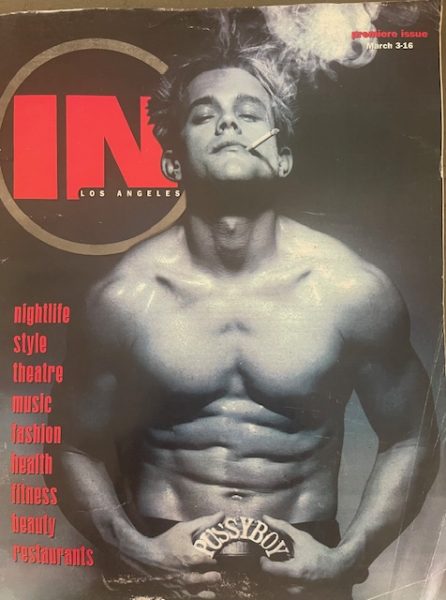
You saw the evolution of queer media and were a part of it. What is your current take on queer media – what is it getting right, what is it missing?
Regarding queer media, I’ve been out of the loop for a decade, but I will share my thoughts on the state of media in general. The following is the Preface of my book:
TODAY, AMERICA IS FACING A MEDIA CRISIS. It began in the 1980s when AIDS, ignored by the mainstream press and government, was raging on. Congress eliminated the Fairness Doctrine that opened a Pandora’s box, allowing the news media to turn into a tool for brainwashing. A functional, modern society needs courageous, trusted journalists on the ground to verify stories and report facts. Trusted news sources are shrinking as the media landscape becomes increasingly fragmented. Future generations will be trapped in this tower of babble, never distinguishing fact from fiction as the hope for freedom and justice fades. Society must find its way back to the earnest quest for truth. In the mid-1970s, at age sixteen, tragedy, fear, denial, and wild abandon turned my world upside down. I ran away from the newly developing suburbs of St. Louis. The parks and back alleys of the U.S. were home to over a million runaway youths. Sexual liberation defined the era. Compared to their heterosexual peers, the homelessness rate among LGBTQ+ youth was 120% higher. This ratio remains unchanged today. Elevator Boy is set in a time when news didn’t drown in the chaos of alternative facts, and meaningless opinions weren’t passed off as truth. Our anti-hero struggles with PTSD from childhood trauma, while society suffers from the same ailment caused by electronic information overload. Sound bites disguised as news are short-circuiting the system. Recognizing the illness is half the battle. Let the healing begin.
How does it feel to now have your life completely out in the open? There’s no going back.
It is completely freeing and healing.
What is your message to the younger queer generation?
Be kind to each other, and remember that Snapchat, TikTok, Instagram, or whatever, are not news sources. Learn how to vet facts.
David is currently working on his next book, a volume of poetry titled “The World of Rhyme and Reason.”
Elevator Boy – An Otherworldly Memoir is available on Amazon, Barnes & Noble, or wherever books are sold.
Books
New book highlights long history of LGBTQ oppression
‘Queer Enlightenments’ a reminder that inequality is nothing new
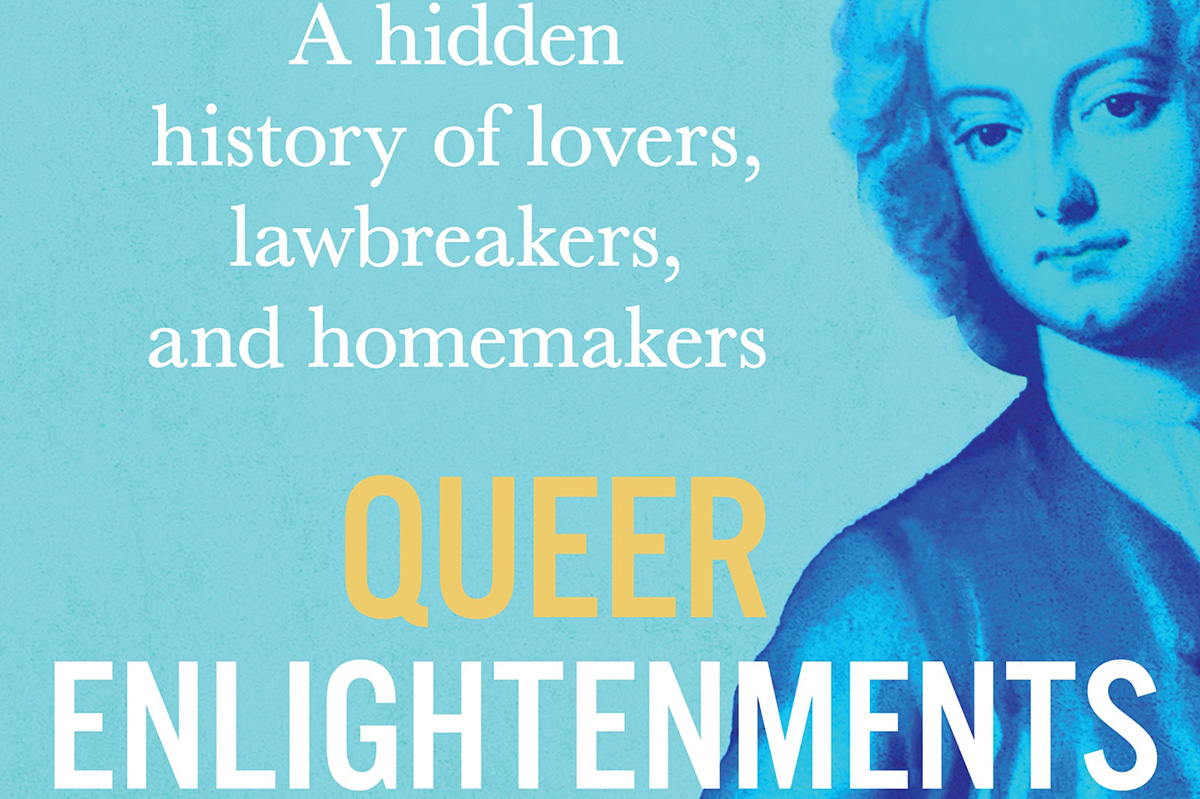
‘Queer Enlightenments: A Hidden History of Lovers, Lawbreakers, and Homemakers’
By Anthony Delaney
c.2025, Atlantic Monthly Press
$30/352 pages
It had to start somewhere.
The discrimination, the persecution, the inequality, it had a launching point. Can you put your finger on that date? Was it DADT, the 1950s scare, the Kinsey report? Certainly not Stonewall, or the Marriage Act, so where did it come from? In “Queer Enlightenments: A Hidden History of Lovers, Lawbreakers, and Homemakers” by Anthony Delaney, the story of queer oppression goes back so much farther.

The first recorded instance of the word “homosexual” arrived loudly in the spring of 1868: Hungarian journalist Károly Mária Kerthbeny wrote a letter to German activist Karl Heinrich Ulrichs referring to “same-sex-attracted men” with that new term. Many people believe that this was the “invention” of homosexuality, but Delaney begs to differ.
“Queer histories run much deeper than this…” he says.
Take, for instance, the delightfully named Mrs. Clap, who ran a “House” in London in which men often met other men for “marriage.” On a February night in 1726, Mrs. Clap’s House was raided and 40 men were taken to jail, where they were put in filthy, dank confines until the courts could get to them. One of the men was ultimately hanged for the crime of sodomy. Mrs. Clap was pilloried, and then disappeared from history.
William Pulteney had a duel with John, Lord Hervey, over insults flung at the latter man. The truth: Hervey was, in fact, openly a “sodomite.” He and his companion, Ste Fox had even set up a home together.
Adopting your lover was common in 18th century London, in order to make him a legal heir. In about 1769, rumors spread that the lovely female spy, the Chevalier d’Éon, was actually Charles d’Éon de Beaumont, a man who had been dressing in feminine attire for much longer than his espionage career. Anne Lister’s masculine demeanor often left her an “outcast.” And as George Wilson brought his bride to North American in 1821, he confessed to loving men, thus becoming North America’s first official “female husband.”
Sometimes, history can be quite dry. So can author Anthony Delaney’s wit. Together, though, they work well inside “Queer Enlightenments.”
Undoubtedly, you well know that inequality and persecution aren’t new things – which Delaney underscores here – and queer ancestors faced them head-on, just as people do today. The twist, in this often-chilling narrative, is that punishments levied on 18th- and 19th-century queer folk was harsher and Delaney doesn’t soften those accounts for readers. Read this book, and you’re platform-side at a hanging, in jail with an ally, at a duel with a complicated basis, embedded in a King’s court, and on a ship with a man whose new wife generously ignored his secret. Most of these tales are set in Great Britain and Europe, but North America features some, and Delaney wraps up thing nicely for today’s relevance.
While there’s some amusing side-eyeing in this book, “Queer Enlightenments” is a bit on the heavy side, so give yourself time with it. Pick it up, though, and you’ll love it til the end.
The Blade may receive commissions from qualifying purchases made via this post.
Arts & Entertainment
Los Angeles’ renowned poet Steven Reigns releases his most intimate work yet with his memorial memoir ‘Outliving Michael’
Reigns celebrates the life of his friend, Michael Church, who died of AIDS in 2000, through this intimate and heartbreaking revisit of their relationship through the power of poetry.
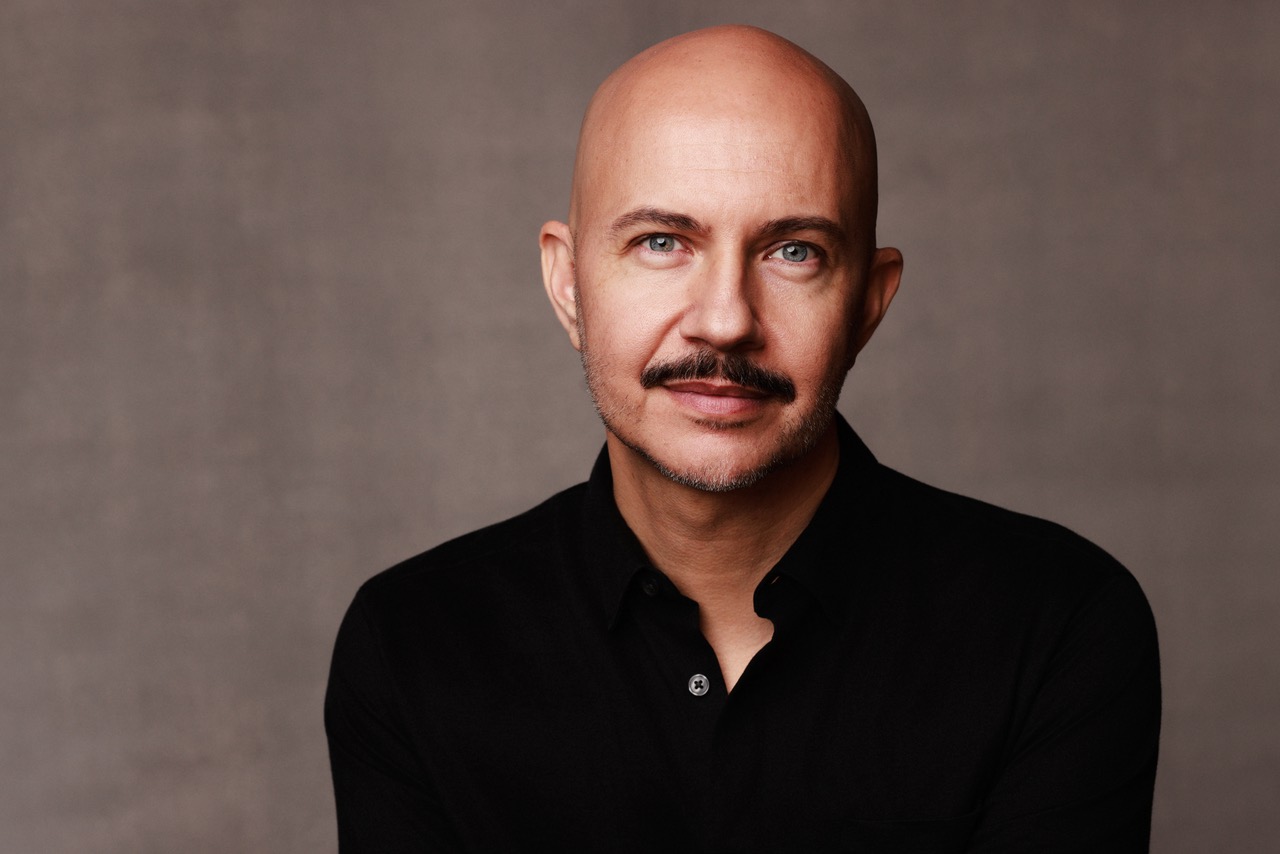
Steven Reigns has been a leader in the world of queer poetry for some time, particularly in Southern California. Reigns served as the first Poet Laureate of West Hollywood and is a nineteen-time recipient of the Los Angeles County Department of Cultural Affairs’ Artist in Residence Grant. He has released a number of works and collections, including A Quilt for David, the result of over ten years of researching the life of David Acer. He curated My Life Is Poetry, spotlighting works from the first-ever autobiographical poetry workshop for LGBT seniors. He continues to inspire through his workshops throughout the nation, catering to LGBTQ youth and those living with HIV.
His hot-off-the-press recent work, Outliving Michael, is perhaps his most naked piece, turning the lens inward and recounting his intimate friendship with Michael Church, bumps and all. Using the power of poetry, Reigns’ work is a roller coaster of emotions and does not shy away from the details. It is heartbreaking, it is raw, it is funny, it is inspirational, and ultimately is a tale of resilience and friendship, despite the odds. Outliving Michael also serves as a glimpse, from a first-hand perspective, of the AIDS epidemic and what it was like to be a queer youth during the 1990s. Church passed away from AIDS in 2000. Twenty-five years later, Reigns returns to this friendship as if it just happened yesterday. The past and present come together under Reigns’ pen, and the result is a powerful kick to the stomach, an important statement of how strong the queer community is and how the past isn’t really that far away. Regardless of whether you are a reader of poetry, this should be required reading for any queer person.
Not only do we get to know Church in this piece, and what an important, essential, and vibrant part of Reigns’ life he was, we also get to know Steven, in a more intimate way than we have seen, as he strips down and reveals aspects of his youth, his journey, and his identity, not shying away from the difficult parts. It is a story of friendship that reads as universal. It is a story of a friendship that thrived regardless of a generation gap. We should all be so lucky to have a Church in our lives. Even though Outliving Michael deals with death, it is also a celebration of the queer joy we can find in our community, regardless of what we are going through politically and socially. We will join hands and will overcome.
We caught up with Reigns on the heels of his book release party at West Hollywood’s Book Soup and in anticipation of the LGBTQ+ Book Club at the West Hollywood Library discussion taking place at the West Hollywood Library Community Room on Tuesday, October 28th at 6 pm. Reigns talked to us about his relationship with Michael, the power of poetry, and how the book comes at a timely moment.
What was it about Michael that you instantly gravitated towards when first meeting him?
I heard about Michael before I met him. His drag name was Blanche, and it seemed like most stories about gay life and definitely drag life in Naples invoked his name. So there was a buzz about him, and he was mythic to me before we even met.
What did Michael teach you most about life and yourself?
The first time we met up outside of a group was to have drinks at a bar. I had a fake ID, and we drank White Russians, his drink of choice. At some point in the conversation, he said to me, “You’re cute. Make sure you can always back it up,” and proceeded to talk about how young gay men ride on their looks, avoid cultivating interests, or avoid being interesting. I was self-assured enough to chuckle at his comment and reply, “I can.” I had been around enough to know what he was referencing. Even with such a sharp comment, I saw it as insightful, bold, and quite caring, even though he didn’t know me that well. It was a warning of what he had seen happen at the bars with younger guys for years. Though he was known for his wit and sharpness, I felt safe with him.
What do you want the younger queer generation to understand the most about the AIDS epidemic period?
AIDS itself is a horrifying disease. The fact that it greatly impacted communities thought of as lesser (homosexuals, IV drug users) meant a slow government and community response. There was so much silence and silencing. The pandemic of AIDS was around for six years before the President addressed it in a speech. There was the belief that the right people were dying and not deserving of help. Gay men and those who loved them were experiencing great personal loss and no governmental acknowledgement, funding, or support. A friend of mine had 14 friends die during one summer. That’s how quickly things were happening. Imagine randomly deleting 14 friends in your address book. The queer communities’ response was impressive in fighting back and demanding care and consideration. That kind of mobilizing and organizing is important for us to think of as we move into a future where our community members are under attack.
You were very young in dealing with Michael’s illness and that loss. Looking back, how would you have handled things differently? Any words of advice for queer youth having to deal with the illness of a loved one?
So many people have a story like mine. Generally, they are older. Because of my fake ID, I was socializing with men older than me, and so I was exposed to more AIDS losses than most men my age. This book is not a hagiography of Michael, but it also doesn’t dwell on his faults or my own. I didn’t feel like those stories were necessary to tell this story of friendship, loss, growth, and survival. So, I didn’t tell the ways in which I was a terrible caregiver. I was young and later learned so much more about how to care for the sick and dying. Also, Michael didn’t want me to take care of him. What he really wanted was his independence and privacy. He had dementia in the end. It created this slower, gradual loss, and I wonder if it, in some odd way, made the final loss of Michael easier. He left in bits and pieces.
You have been integral in working within circles with those affected by HIV/AIDS. What inspired you to get so involved, besides losing Michael?
I am forever grateful for having Martha Roper as a sex education teacher in St Louis, Missouri. She taught sex without shame, euphemisms, or obscurifications. She was direct, and that’s what was needed then. I learned so much, not only about HIV transmission but about sexual communication and dynamics. That education helped me navigate through the adult world of sex when I wasn’t fully an adult but sought out such experiences. After Michael died, I worked in the HIV field, educating, testing, and counseling thousands of people about transmission. Friends were concerned at how I threw myself into that job, but I likened it to a hurricane, in that the calmest part was being in the center of the storm.
This is not your typical memoir, being told through poetry. How is sharing Michael’s life most effective in this format? How does telling it in poetry add to the story?
Poetry is the language of our emotions, and so telling such an emotional story, it seemed poetry was the perfect medium to do that. I’m also writing about events that were 25 years ago, poetry can allow jumps in time, omissions of details, and yet still hold the emotional truth of an experience.
This book is easily accessible to readers who are not used to reading poetry. How did you make it so accessible while still presenting complex and beautifully layered poetry?
I’m flattered you think so. I think with most things in the arts, the real skill is to have the labor of the final product be invisible. It’s hard to convey complexity simply. That’s what poetry can demand of the poet. My poetry style is straightforward. I’m not interested in poetry as a riddle or rhyme. I want readers to feel something, learn something, and gain a different perceptive.
What do you want readers to walk away with most after reading this book?
This book moves beyond just my experience; it taps into our universal feelings of loss and grief. I want readers to learn about Michael, about what it was like being gay men in the 90s, but also for them to reflect on their own friendships, mentors, and the impact that friends have on our lives. My life was enriched and changed by Michael, and I devoted years to writing about this. I think most of us feel like our friends, those family members of choice, are worthy of such effort and dedication. I’m pleased I did this for Michael and hope it inspires others to tell their stories about their loved ones.
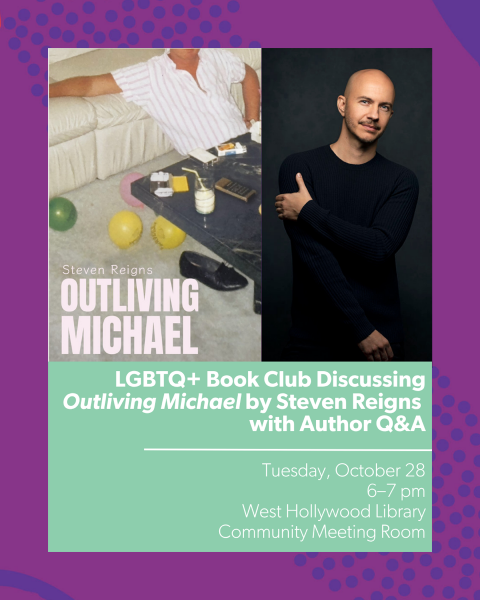
Books
Florida’s war on Black, queer lives hidden no more
New book ‘American Scare’ exposes truth of decades of erasure, attacks
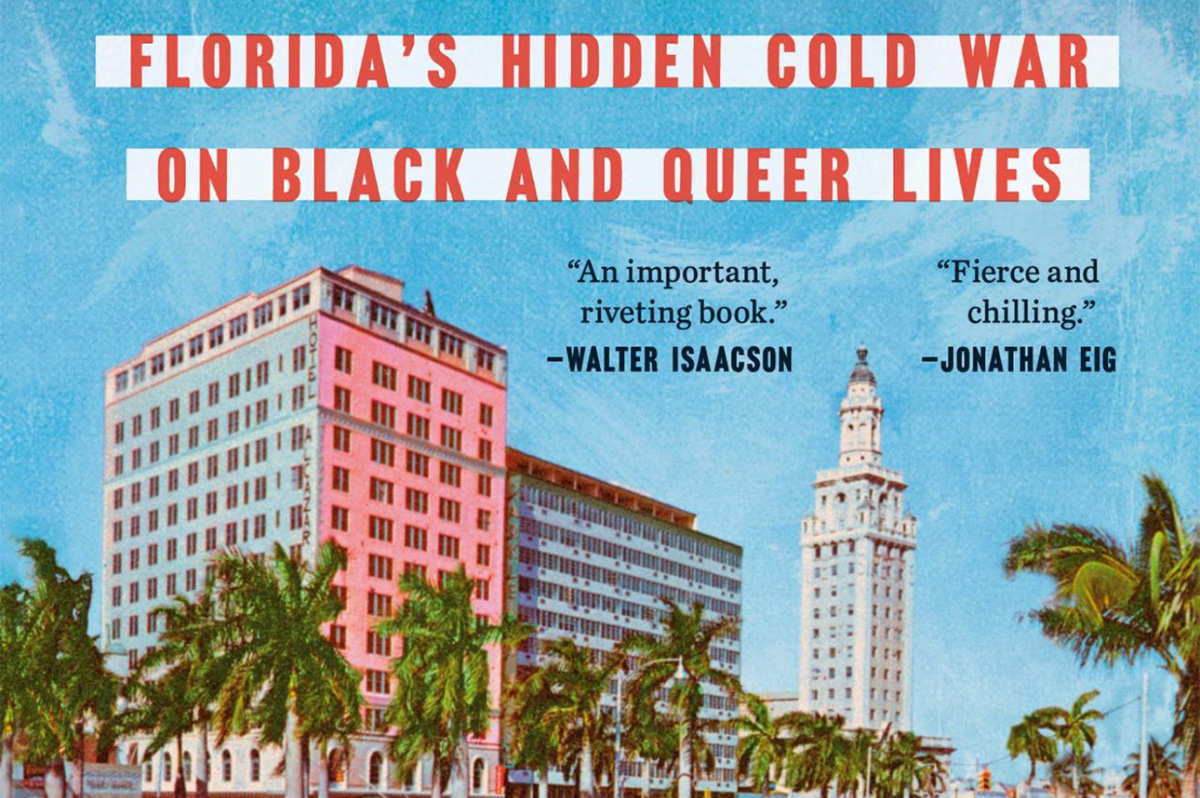
‘American Scare: Florida’s Hidden Cold War on Black and Queer Lives’
By Robert W. Fieseler
“What’s with Florida?,” Bobby Fieseler, disgusted, asked after completing his initial research into the vicious investigation of suspected homosexual teachers by the Florida Legislative Investigation Committee (FLIC) in the 1950s. How did the official animus toward all things queer happen in Florida, Fieseler pitched his publisher. We can be grateful Dutton gave him the green light for “American Scare, Florida’s Hidden Cold War on Black and Queer Lives.”

Fieseler’s book is a masterpiece of archive activism that begins in a rental van escaping Florida with some 20 boxes of historical documents meant to be seen by no one. The cartons contained a secret second copy of materials that had been held back from the jaws of the Florida State Archives in Tallahassee. Soon, more folders would surface with unredacted materials. “There are friends of Dorothy in any system,” he explains his archival detective work with a wink.
What’s with Florida? In the 1950s, it was all about legislators exposing politically helpless homosexuals to justify the committee’s investigations and budgets. The FLIC documents reveal the names of the accused “perverts,” the cops who raided the restrooms, the terrified queer informants and the professional interview techniques that would extract confessions from the victims. On another level, this was about old-school Southern racists determined to stop integration at all costs with intention to weave lies about Communist infiltration of the NAACP. Finally, Fieseler encountered first-hand an official determination to erase and lock-up this history. The statewide obsession with erasing history continues to this day. The Florida Department of Transportation this year painted over the community rainbow crosswalk memorial to the Pulse nightclub massacre victims in Orlando.
“American Scare” is such a fully documented investigation of what unfolded, it will be impossible to paint over the magnitude of this assault. The book bears witness in gory detail to the ruination of private people that exceeds in pure perniciousness the more famous “Lavender Scare.” Although the “Lavender Scare” purged many more individuals, it was about the U.S. Department of State firing public officials slimed as “pinstripe twerps.” The Florida investigations were a statewide purge using a dark politics of exposure of schoolteachers leading private lives. Fieseler quotes Remus Strickland, the head homo-hunter and executive director of the Southern Association of Intelligence Agents formed in response to the Supreme Court’s Brown v. Board of Education desegregation decision (1954), “If the Committee’s first pursuit (race and Communism) was a mandate, its second pursuit (homosexuals) was an opportunity.” Remus (that’s really this Southerner’s name) explained years later without remorse, “We first looked at the University of Florida for Communists….then we came back and did the homosexual purge.” Fieseler’s archival research reveals how far-right politicians and investigators like Strickland characterized Communists, African Americans (through the NAACP) and homosexuals as aligned “treasonously in a subversive societal infestation.”
The whole show was the creation of a wily, populist politician — a Florida “Pork Chopper” — Charley Johns, president of the Florida Senate. “Pork Choppers,” the rural, white Northern Florida wing of the old Democratic Party, controlled the state legislature from the 1930s to the 1960s. They were strongly opposed to integration, Communists, homosexuals, reapportionment and government reform. Johns owned the Charley E. Johns Insurance Agency, which insured state agencies. Fieseler’s history brings these North Florida politicians into grotesque focus. Their “power had lynched history,” he writes about his passion to excavate how they sealed and redacted the records so they would never face responsibility for their actions.
“American Scare” reveals how these Pork Choppers were willing to crush homosexuals as an instrument to maintain power. Their victims were isolated gay and lesbian teachers who could only plead for mercy, vanish or inform on one another. They were entrapped by the system itself. Fieseler tells the story of how Remus Strickland pulled Miss Poston, a physical education teacher out of her classroom surprising her with a tape recorder and a request to give a misdirecting statement about the prevention of child molestation. Suddenly Remus changed the subject: “Miss Poston, in your acts with Miss Bradshaw whom you referred to on this record, would she play the part of the aggressor…..She was known as the butch is that true?….Was there any occasion of any oral copulation?” He closed in for the kill, “Could there have been more than one time”? Miss Poston caved, “Possibly but if so only one more time.” The reel-to-reel tape is turning.
Concert pianist and music teacher William James Neal received the same taped grilling. Remus begins the interview, “You’re an educated Nigra,” confronting Neal with testimony he was a homosexual “nigra.” Years later, Neal remembered, “He told me I would never teach within the continental limits of the United States. He said he had proof I was a homosexual.” An African-American concert pianist, Neal had extensively toured the U.S. playing with major orchestras and hosting his own radio program in Florida. Neal had the self-respect and courage to take his illegal termination to the Florida Supreme Court. In 1962, the court ruled in his favor (Neal v. Bryant) handing Remus Strickland a devastating defeat, writing “The statements accused teachers allegedly made were obviously extracted under a threat of publicity.” Vindicated, William Neal nonetheless left Florida never to return.
There have been resolutions for an acknowledgment and apology. None have advanced through the Republican-controlled legislature occupied with a slew of “Don’t Say Gay” bills. “American Scare’ is larger than a small-bore history of investigations. It is the story of a Great Florida Teacher’s Purge launched to stop integration. Fieseler is done with redactions. He names names. If there is anything redemptive in this Southern hot mess, it is this: Bobby Fieseler, a queer historian, rescued the boxes and delivers readers their contents with history’s gale force.
The Blade may receive commissions from qualifying purchases made via this post.
Books
New book a fun travelogue, memoir focused on cemeteries
‘Somebody is Walking on Your Grave’ takes readers around the world
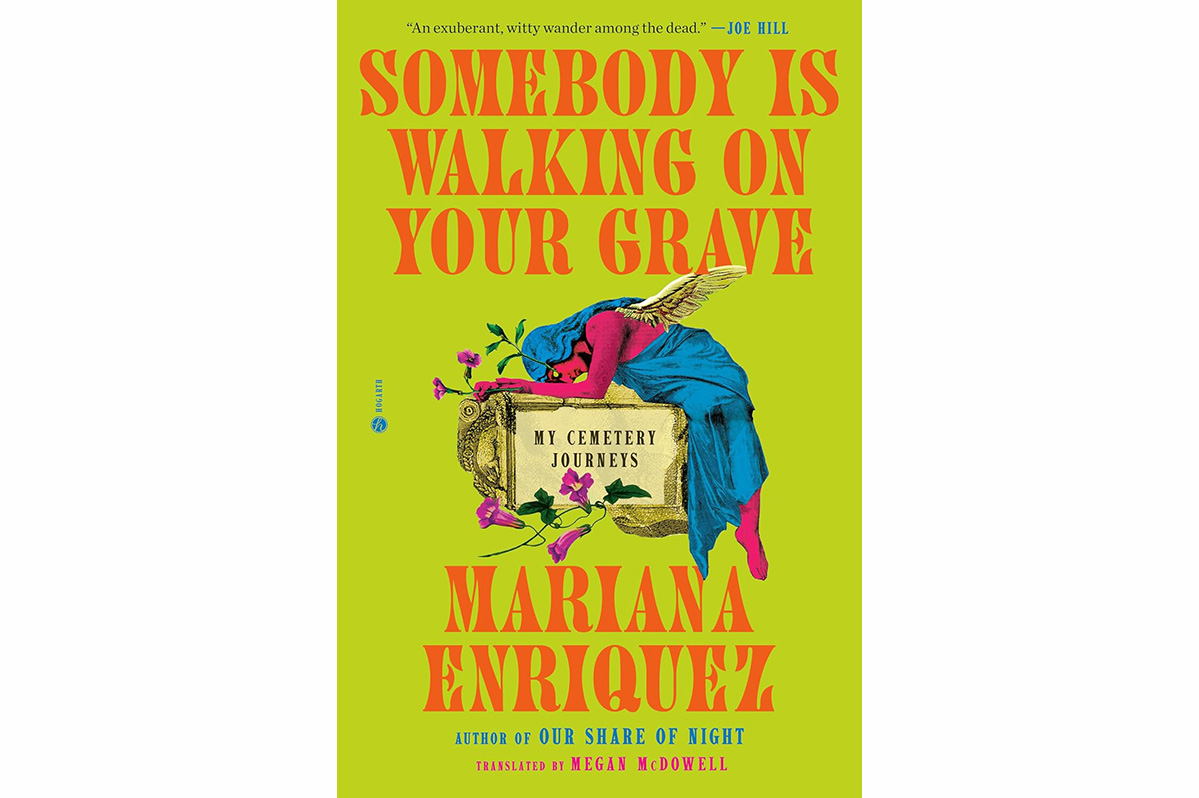
‘Somebody is Walking on Your Grave: My Cemetery Journeys’
By Mariana Enriquez, translated by Megan McDowell
c.2025, Hogarth
$30/336 pages
The knee bone’s connected to the shin bone.
You can go up from there, or down your body’s scaffolding. The backbone’s connected to the rib bone. The hip bone to the leg bone, the wrist bone to the finger bones, and in the new book “Somebody is Walking on Your Grave” by Mariana Enriquez, translated by Megan McDowell, there’ll come a day when you won’t need any of them.

She always had an appreciation for cemeteries.
Still, they weren’t an obsession until Mariana Enriquez fell head bone over heel bones in love with a street musician while on a vacation in Italy with her mother. He took Enriquez through a cemetery on their whirlwind romance, which sealed her love for graveyards.
She never seems to miss a chance to tour them, to marvel at the beauty of statuary atop marble resting places, to see tombstones listing sideways, or to note the names and tragedies of the dead. This includes the graves of non-humans, like a horse that helped its owner escape an Argentinian uprising in 1885; and a Scottish dog who guarded his owner’s grave for more than a decade.
Enriquez visited San Sebastián, Spain, and was almost jailed for it; and she was lectured about Aboriginal graves by a white man on Rottnest Island, off the Australian coast. There was a magical sense at Sara Braun Municipal Cemetery in Chile, and an absurd couple of mysteries in Argentina. She visited just some of the 42 cemeteries in New Orleans including, of course, crypts and the grave of Marie Laveau. She spent Dios de Muertos in Mexico, and was surprised that you can live near a funeral home in Savannah and not have ghosts. She visited the catacombs in France, and argued with guides and guards in several different places, noting that people are a lot nicer when they’re dead.
In a very big way, “Somebody is Walking on Your Grave” is a fun travelogue that’s also part memoir, and taphophiles will love it. But readers who specifically add a cemetery tour to their vacation itinerary, or who obsessively scour guidebooks for graveyards to visit will enjoy author Mariana Enriquez’s observations; they’re humorous and not stuffy, lightly acknowledging the bit of the macabre that’s here. She includes history behind the cities she visits, as well as for the cemeteries, and that can be a bit longish sometimes. You may not mind, though, because her descriptions enhance any trip you might make, serving as exactly what you’d want from a real live tour guide.
But toward the end of this otherwise-delightful book, Enriquez unabashedly admits to doing something atrociously unsettling, to which she says she feels no remorse – which may be a hard forgive for readers who wouldn’t ever dream of emulating it.
This book is a fun read, up to that point, so just beware. Most of “Somebody is Walking On Your Grave” is truly interesting, but that one chapter inside here may not fully allow you to wrap your head bone around it.
The Blade may receive commissions from qualifying purchases made via this post.
Books
These four intertwined stories will leave you flabbergasted
Characters in ‘The Elements’ wrestle with culpability and the past
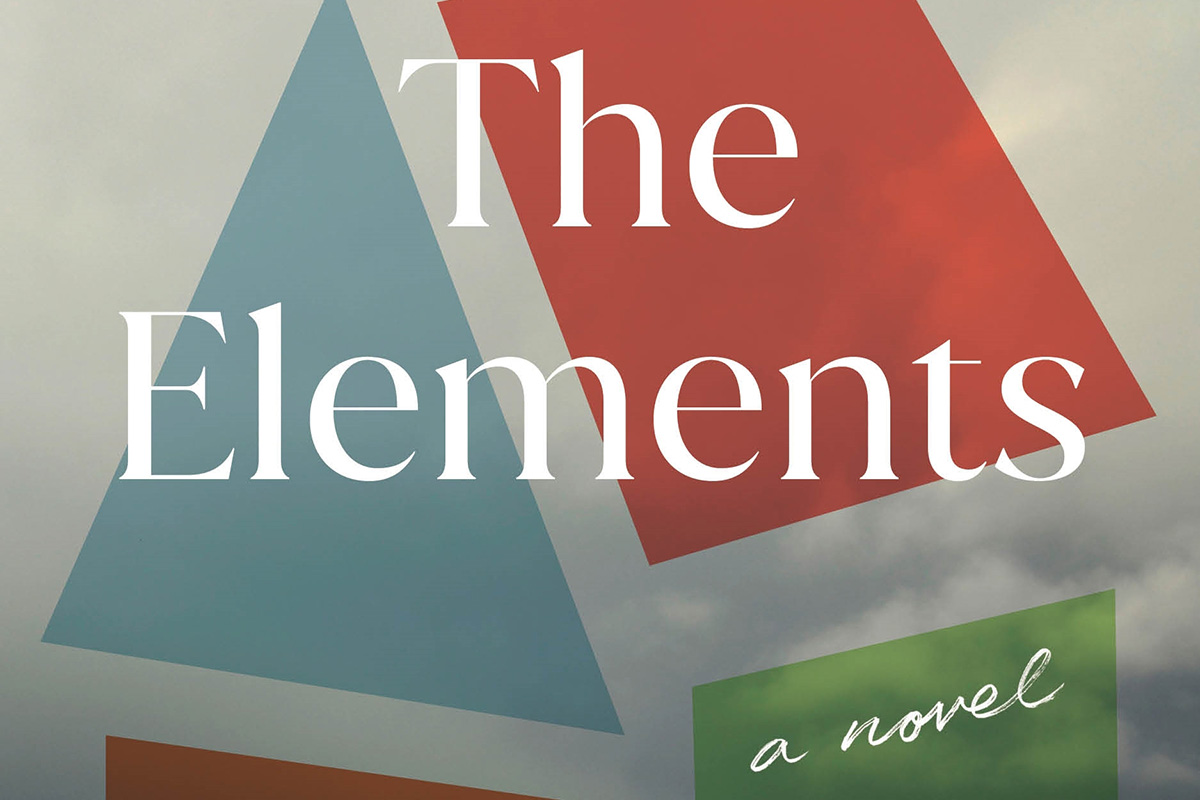
‘The Elements’
By John Boyne
c.2025, Henry Holt
$29.99/496 pages
You weren’t proud of it.
Something you did in your past, yesterday, five years ago, a lifetime, you think of it sometimes and poke it like a bad tooth. You’re not proud of it but you paid for it anyhow, with time, money, apologies, or through a jury of your peers and you know this: as in the new novel, “The Elements” by John Boyne, the condemnation is harshest when the jury is you.

She changed her name again.
It was the first thing Willow Hale did when she rented the cottage on an island not far from Dublin. Isolation would help her sort things out: to figure out why her husband was in jail, why her daughter avoided her. Willow didn’t want anyone to recognize her as she came to terms with her role in what happened.
Though he was born with the skills of an athlete, Evan Keogh didn’t want to be a soccer star. He wanted to be an artist after he left the island, but he wasn’t talented enough. Coming to terms with that took a while, and he sold his body to older men to get by in the meantime. When he finally accepted his athleticism, it was not because he loved the game. It was because he loved revenge but satisfying that itch would ruin his life.
Medical students were annoyances that Freya Petrus had to endure.
Though she was a highly regarded burn surgeon, the truth was that she disliked humanity in general, perhaps because of childhood trauma she couldn’t forget. So, teeth gritted, no family, no friends, no close colleagues, she endured people, relying instead on a sordid hobby to soothe her memories.
Rebecca didn’t ask Aaron Umber to bring their son from Australia to Ireland, but there was a reason he did so, though Emmet balked at the trip. Emmet was at a tender age, not an adult but not a child anymore, either – 14, the same age as when something happened to Aaron that affected him forever.
Where to begin?
How about: “The Elements” is an incredible book.
How about from the very beginning of it, you’ll be captured by what feels like “The Twilight Zone” without the paranormal; like reading the news, and wincing.
Here, the lush Irish background that author John Boyne so lovingly portrays is secondary to his characters, each of them flawed, maybe irretrievably so, as they wrestle with culpability and self-indulgent recognition of the past. You’ll dangle from a string as four intertwined tales eke out in a delicious tease, detonating a little TNT on a page every now and then to keep you on the edge of your chair.
No spoilers here but the end of these four stories isn’t quite really an end, which will leave you flabbergasted, staring at the back cover for a few minutes after you close it.
Beware that there are adult themes inside this book, and they could be triggering. If that’s not a worry, let yourself be stunned by “The Elements.”
Love it? Guilty.
The Blade may receive commissions from qualifying purchases made via this post.
Books
Richard E. Cytowic explores complicated relationship with father in new book
‘The Magician’s Accomplice’ touches on camp, ‘80s gay D.C., alcoholism
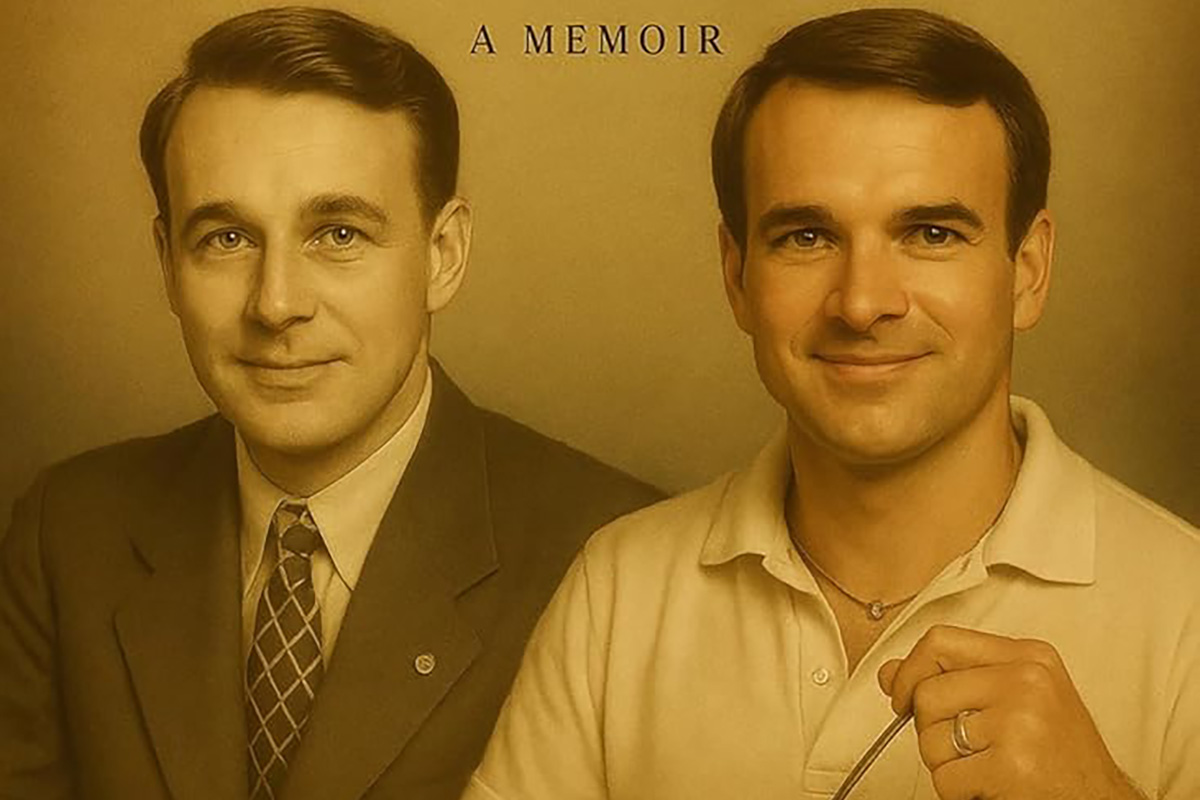
Richard E. Cytowic, neurology professor at George Washington University, has written a memoir, “The Magician’s Accomplice: My Father and I in the Age of Anxiety,” about his complicated relationship with his father, Edmund R. Cytowic. “Big Ed,” also a doctor, was a larger-than-life figure who molded his family into a perfect image while hiding his drinking and drug use. In an interview edited for clarity, Dr. Cytowic spoke about magic as metaphor, memories, and gay life in D.C.

BLADE: What was your inspiration for writing this memoir?
RICHARD CYTOWIC: It was something I felt I had to do. If I didn’t write it, I would go crazy. And it’s taken me about 10 years. It’s gone through many iterations. The first version started with my first day at Duke and had a dual narrative with myself as a young man, stumbling about making mistakes, and the older, wiser neurologist looking back on his younger self and commenting on it. That didn’t work out, but I realized the story was really about my father and me and our dynamic, how he shaped me to be just like him. At the time, I didn’t realize, because, when you’re too close to the material, you can’t see it for what it is. My sister’s observation in the memoir’s opening line, “Come hell or high water, you were going to be a doctor like him,” captures all my memories of him. And I am, I was.
BLADE: The interpretations you give some of your memories are striking. For instance, your family dancing onstage at a Liberace concert. From the outside it feels charming, yet there’s pain there.
CYTOWIC: It is an amusing anecdote. But it’s also sad because it shows we were all performers. We got up on stage effortlessly, we all knew our lines. We knew what to do, how to pose in front of 4,000 people, because we were Big Ed’s puppets for many years. And we just thought it was quite natural to perform because we had been doing this all our lives.
BLADE: It’s striking how in that moment you saw yourself becoming a monster like your father, trying to be the center of attention. You told Liberace, “I have a piece ready to play if you want.”
CYTOWIC: And he said, “This is my show, Richard.” He saw that even at 10 years old, I was trying to take over the center stage. But that’s what we were taught. We were supposed to shine and perform and just be charming, in a way that made us totally false. My impetus for this memoir was to try to understand Big Ed. For stories like this where you have an alcoholic father out of control, it’s so easy for everybody to say, “Oh, my God, I hate him, I can’t stand him.” What I call “You son of a bitch, look what you did to me” stories, those are the easiest stories in the world to tell. But it doesn’t tell anything about the monster, so you have to ask: Was the monster hurt or lonely? Why did he act that way? What made him the way he was? Was there some original wound that he was acting out on himself? So, in the end, instead of a “You son of a bitch” story, it’s really a love story to Big Ed, trying to show some compassion to him and understanding what sort of creature he was.
BLADE: At one point you describe him as high camp. I wonder if you if you ever thought that he might have been gay or bisexual, if deeply closeted?
CYTOWIC: I wonder that too. I don’t have any proof one way or the other, but he certainly was sexually very outspoken. He had all those nude orgy parties and took pictures all the time. I’m sure that goes on all the time now in D.C., but back then, it must have been very unusual. The fact that he could convince people to take part in all that, have them dress up in costumes and pose for pictures, you just have to laugh and think, wow, what a force of nature he was. And mentioning camp, he was camp in the sense of Susan Sontag’s definition, which is a singular incandescent figure who is one thing, an exaggeration, and that was him. He instilled in me a taste for the offbeat and the unusual. If something was normal, I wasn’t interested, but if it was a little off, that was attractive.
BLADE: You mention being drawn to camp figures like Auntie Mame and Liberace.
CYTOWIC: When I saw “Auntie Mame” at Radio City Music Hall, I was in the first grade, so I was five years old. I loved that movie so much because all that craziness was so familiar. Patrick making drinks in the morning, I did that. And my classmates and peers didn’t do anything like that, though it took a while to realize what an unusual life we were living, my mother, sister, and I with Big Ed.
BLADE: The theme of magic and magic tricks runs through the book, which connects so much of life with your father and even your life outside.
CYTOWIC: Magic is a real through line, because two things were prominent with Big Ed. One was the cameras. He had tons of cameras, and the other was the magic, which he did constantly. So would I. When we went to the lake in the summer, I would entertain neighbors and guests by putting on a big magic show. I even made up my own trick. As I say, magic is about telling people you’re going to fool them and then fooling them. Having them know what they’re seeing isn’t possible, and yet they believe it.
BLADE: It feels like such a perfect metaphor for your family.
CYTOWIC: It’s the spectator’s ability to hold two different, contradictory perspectives at the same time. That’s what we did. On the outside, we were a lovely family, everybody would compliment us when we went out to dinner. Back then, with children in restaurants, everybody said, “Oh my god, they’re going to start screaming and running around,” and we were the opposite. My sister and I were dressed up, I had a little coat and clip-on tie. We cleaned our plates, which my father really liked. And then people would come over and compliment my parents on what lovely children they had. Even the proprietor would say, “Doc, your kids are welcome here anytime.” We went against expectations. Here’s this picture perfect little family, so sweet and lovable, and yet behind the scenes, it was absolute chaos. That was the magic, the illusion that we were this lovely family on the surface, while behind the scenes, all hell was breaking loose.
My sister to this day still hates my father. Every time we talk about him, she says, “I hated him. I couldn’t get out of the house fast enough.” She’s frozen in her perspective, and I went instead and looked, to find out who he was, what made him kick? Why was he this way? How did he make me the way I am? And how did I emerge with my own personality? Also, in turning away from the “You son of a bitch” kind of approach and moving to one of trying to understand him, that’s the magic trick that that brings him back, like the dove that’s hidden, and then you produce some silk scarves and, abracadabra, the dove reappears again, all whole.
BLADE: Your descriptions of gay life in D.C. during the ‘80s are fascinating. What’s been the biggest change in that world nowadays?
CYTOWIC: When I came to D.C., you really couldn’t be out in a broad sort of way. So you cultivated a circle of friends, you learned to entertain and throw parties, you did fabulous things. There was a lot more cohesiveness in this world because we all protected one another. I was out but I didn’t make a big deal of it. And it was only when I interviewed for the position of chief resident of Neurology at GW, that it became well-known. I kept meeting people through the process, including David, a psychiatrist who was training to get his neurology certification. I went to his place and talked some more and felt so comfortable talking to him. He mentioned he and the woman he was seeing were going out that night and asked, “You want me to get a date for you?” I said, “Well, David, that’s very nice. Thank you, but I’m gay.” I didn’t realize that he would tell everybody so that when I finally accepted the job and showed up, everybody knew already that I was gay. It helped that there was a physician, an assistant Dean, in the department who was also gay. So we were naturally sympathetic to one another and he was very helpful. It really helped, too, that GW was, and still is, the gayest medical school in the country. If a student at another medical school had problems because he was gay, being bullied, he would transfer to GW. It became a magnet for medical students all over the country. Also, I remember thinking, I’m six blocks from the White House. It doesn’t get any better. At that time, D.C. was a very gay city, so it was easy to make friends and pick up tricks or whatever I wanted to do.
The cell phone has ruined so much because you can’t get people to commit to anything. Instead of saying, “Let’s have dinner next Tuesday at 7:30,” they say, “Well, I don’t know what I might be doing. Something better might come along.” I don’t how people socialize anymore because it’s all so last minute. It drives me crazy. I used to throw sex parties in the ‘90s. I called them “office parties” because they were in my office. I took over from a group that socialized first, starting with drinks and hors d’oeuvres, and then they announced, “time to take off your clothes.” And I said, “No, you cannot mix a social setting with a sexual setting. It doesn’t work like that.” I took over, and set strict rules, one being, everybody arrives at the same time. You’ve got to be here between 8 and 8:15, or else the door is locked, and you’re not getting in. Because so many other parties had people showing up two hours after it started, when things got hot. If you make things hot from the get go, then everybody has a really good time. Now, I don’t know what people do. I’m out of the loop. My orgy days are over.
BLADE: What do you hope readers will take away from “The Magician’s Accomplice?”
CYTOWIC: How to be yourself. I learned how to be myself and not be at the mercy of other people’s expectations. I developed the attitude of, I don’t care what other people think, because their opinion doesn’t affect me one way or the other. So when I write something, I’m not trying to prove a point or convince people. I say, “Here’s what I know. Here’s what I’ve been through. Take a look if you find it useful.” Maybe my experiences will help you.
The Blade may receive commissions from qualifying purchases made via this post.
Books
New book explores contributions of African Americans to settling of the West
Horses have been hiding in plain sight in Black history for centuries
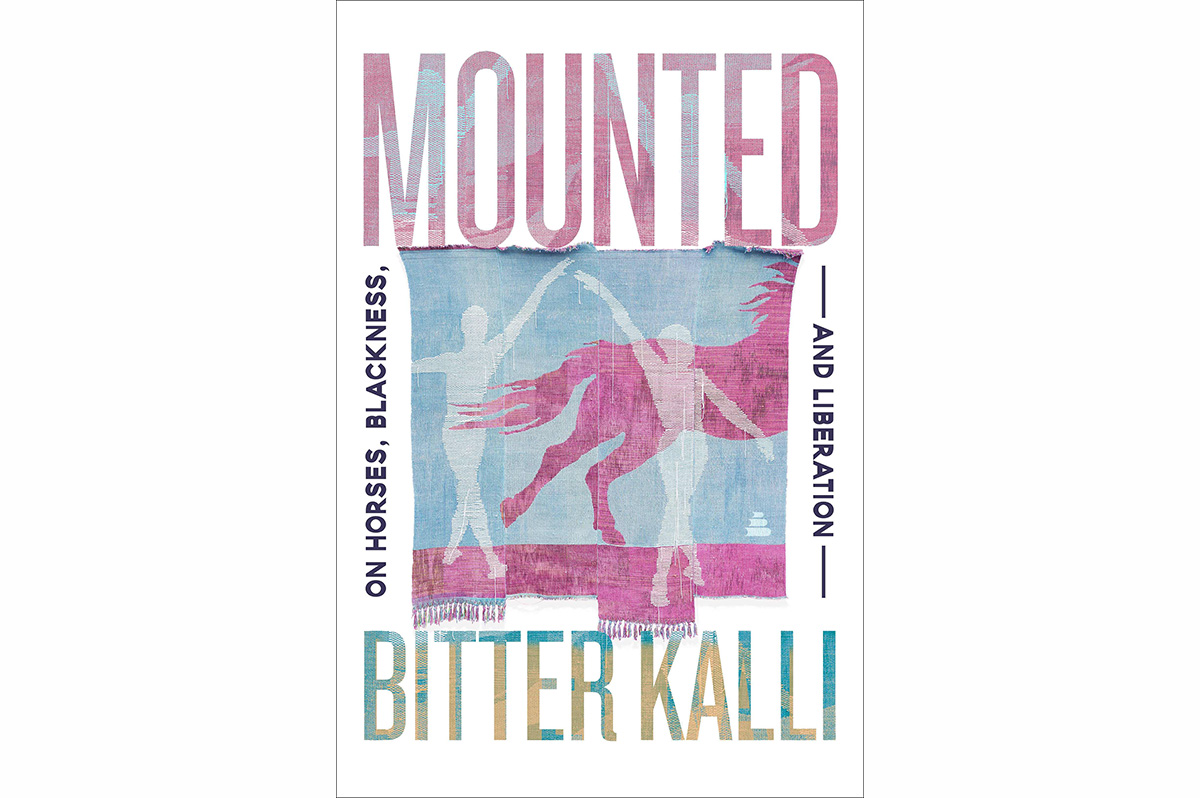
‘Mounted: On Horses, Blackness, and Liberation’
By Bitter Kalli
c.2025, Amistad
$22/192 pages
One thousand, two hundred pounds and four legs.
Put that between your knees and you’ll find out what real horsepower is. You’re five feet off the ground, moving as fast as a car on a downtown street, hooves pounding as hard as your heart. Dangerous? Maybe. But as you’ll see in “Mounted” by Bitter Kalli, your ancestors did it and so can you.

When they were a young child, “around the age of six or seven,” someone gave Bitter Kalli a set of “pony books,” the kind that appeal to young girls, mostly white ones. Kalli wasn’t entirely comfortable identifying as a girl then but they adored the books, in part because the stories featured the kinds of friendships and acceptance Kalli wanted. After devouring those stories, they begged their parents for riding lessons from a nearby Brooklyn stable.
Fast forward to 2014, when Kalli was 17 years old, an experienced equestrian, a trans individual, and a protester at college. During that protest, they watched the horses that carried the police, and wondered what those animals saw in the crowd.
For that matter, what did horses see throughout Black history?
In times of slavery, it was not uncommon for fleeing slaves to steal a horse or two to get away faster. Kalli shares heart-pounding tales of escape, sharing examples of how human chattel was often compared to that of equines in newspaper ads, as slaveholders mourned the latter loss much deeper than the former.
Many Americans are unaware of the rich contributions that African Americans made to the settling of the West. Kalli examines a popular movie, deconstructing it and adding real history to the Hollywood tale.
“What we know as the Wild West would not exist without the 182,000 enslaved people living in Texas in 1860…” they say.
Horses are featured in many of the world’s religions. Horsey language lends itself to the erotic. Even, says Kalli, “Black and brown youth in Brooklyn” understood the appeal of a good-looking Polo pony…
Take a good study of the cover of “Mounted.” Appreciate the artwork, notice the design. Then add this book to your “Things I Never Really Thought About” list, because you’ll think about it now. And you’re going to want to read every delicious word.
Horses have been hiding in plain sight in Black history for centuries, but author Bitter Kalli pulls them to the forefront, turning each facet of the subject over for deeper examination and additional thought. Happily, you won’t feel forced to do that; their writing comes across like an invitation to a warm, intimate conversation, the kind you get while casually hanging out with a new group of friends on the patio. What you learn is highly intriguing, and you won’t ever see horses in the same way again.
Beware that this book has one explicit chapter inside, but it fits the narrative and you won’t mind. You’ll be too busy enjoying what you read and wanting more. For horse lovers and history lovers alike, “Mounted” is the perfect ride.
The Blade may receive commissions from qualifying purchases made via this post.
Books
‘Hotshot’ follows career and life of nonbinary firefighter
New book will rankle and inspire readers
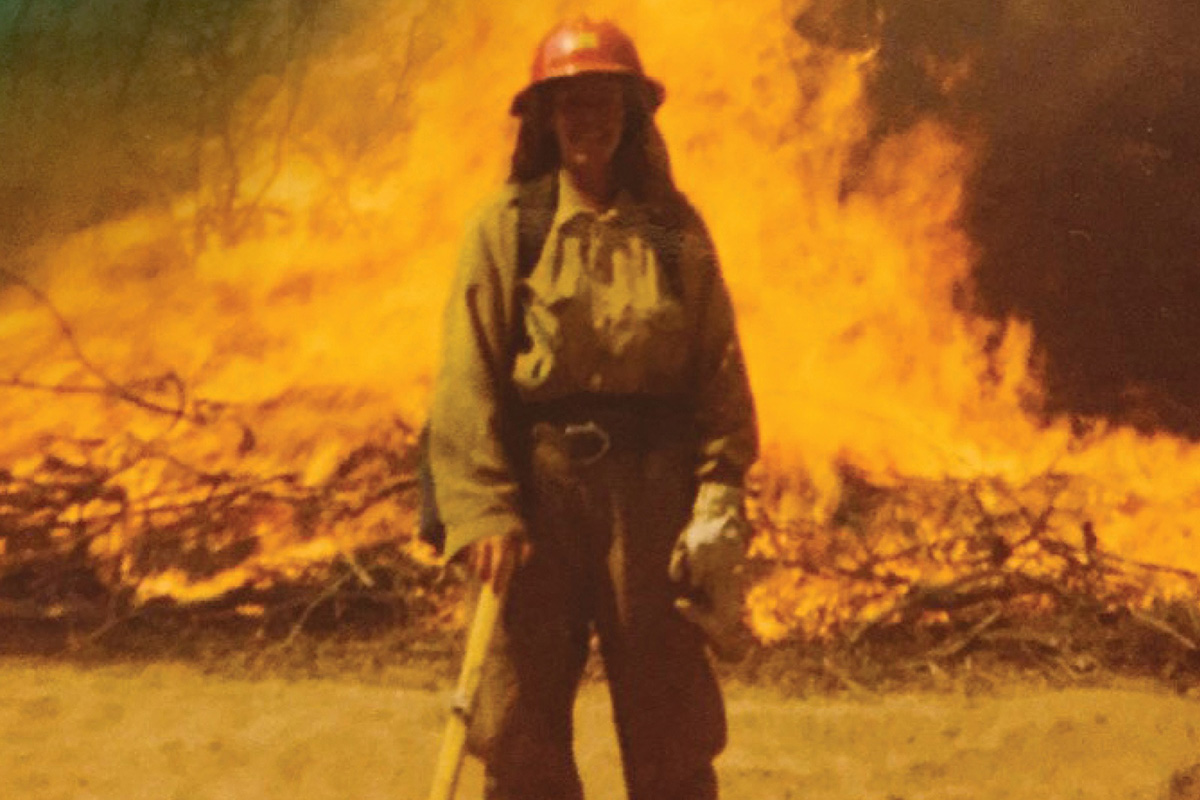
‘Hotshot: A Life on Fire’
By River Selby
c.2025, Atlantic Monthly Press
$27/326 pages
How you doing?
Everything good? You need anything, something to drink, a plate of food, a hug, just say the word. If you’re here, you should at least be happy about it. As in the new book “Hotshot” by River Selby, there’s a problem if something’s wrong.

River Selby never set out to be a hotshot firefighter.
They never set out to do anything, in fact, but to stay alive while doing drugs, selling sex for food and money, working as a stripper and a waitress, and living for a time with a man under a bridge. It wasn’t the life they imagined when they became a runaway as a tweenager. Fighting fires was never on the radar until too many losses and an “unraveled” life, bulimia, and a series of fast-food jobs sent them into a deep depression. The suggestion from a friend, a lifeline thrown, made Selby realize that they “would have tried anything.”
“A week later,” they said, “I was hired. Two weeks after that I was on my way to New Mexico for my first fire assignment.”
Quickly and clearly, a big goal became apparent: Selby wanted to be a hotshot, to feel the “reverence” and camaraderie that elite firefighters enjoy, to know the excitement of chasing a raging fire – but they were told, “You can’t be a hotshot. You’re a girl.”
Two years later, the dream was realized after all when they were hired as “the first woman” of a hotshot crew, a fact of which the supervisor reminded Selby constantly. Sexual harassment and constant put-downs instantly became on-the-job concerns, none of which could be reported for fear of reprisals. That intensified Selby’s bulimia, sending them on an emotional tailspin, unsure of themselves and the root of the anxiety and feelings of inadequacy.
They sought therapy – and things again became clear.
“If you really believe that about yourself,” a therapist told them, “then someone taught you to believe it.”
In the past few months, there have been a lot of new memoirs about fighting fires, each as timely as the last. In the midst of them comes “Hotshot,” which is absolutely not a made-for-TV book. It’s different.
Yes, you’ll find some danger inside here and some edge-of-your-seat pages but mostly, fires aren’t all that need fighting in author River Selby’s account. From the opening pages, they plainly let readers know that their back story isn’t what you might expect from someone in a gutsy profession; in fact, this memoir might instead change your definition of “gutsy” as the actual fires they battled take somewhat of a back seat. In the fiery wake of #MeToo, that can get squirmy but Selby’s stories from history, ecology, and geology make great ballast.
This is a worthy book for adventurers, and for readers who wonder what it’s like for a nonbinary person in a deeply swaggering world. “Hotshot” may rankle you, it may inspire you, it may open your eyes to your own soul, so find it and read. With this book, you’ll love doing it.
The Blade may receive commissions from qualifying purchases made via this post.
Books
New book says good manners needed now more than ever
Avoid these five taboo topics when engaging in small talk
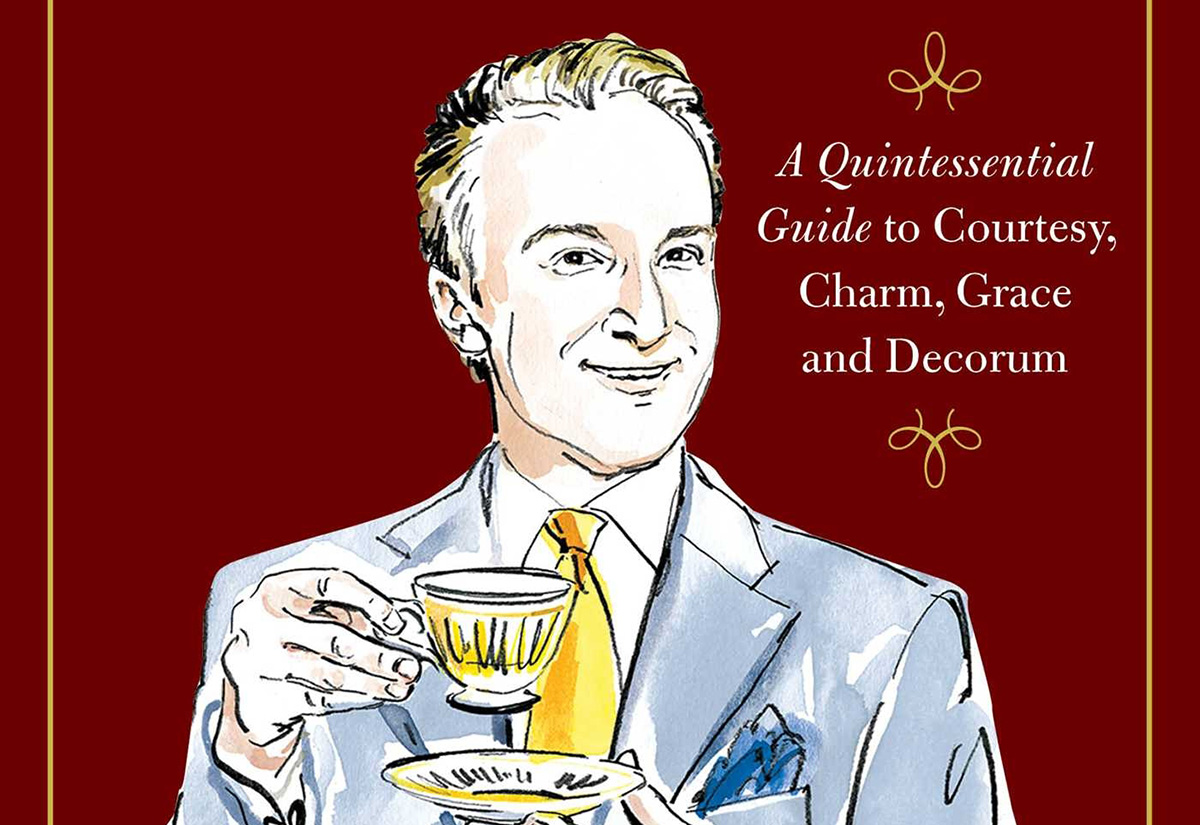
‘Just Good Manners’
By William Hanson
c.2025, Gallery Books
$28.99/272 pages
So. Many. Forks.
You’re glad you’re not doing the dishes at the end of this dinner – but in the meantime, what’s protocol? If this event wasn’t a make-or-break, filled-with-repercussions kind of deal for you, you wouldn’t care; you’d use one fork, one spoon, and enjoy your meal, thank you. So please pass the salt and the new book “Just Good Manners” by William Hanson.

Dining at a restaurant not long ago, Hanson noticed a glaring difference between how his fellow Brits order a meal, and how Americans do it. We might share a language, he says, and we’re a lot alike but we’re also different in many ways. Manners are one of them.
It may seem that formal manners are archaic, even quaint, but Hanson says that they’re needed now more than ever. Manners help smooth social transactions. They leave room for grace in many situations, and they help put people at ease.
“Contemporary etiquette,” he says, “is rooted in six key principles.”
Humility is what ensures that everyone at your meeting or dinner is comfortable, not just you. Hospitality welcomes everyone to the table. Knowing one’s rank shows respect. Says Hanson, “politeness takes patience” and humor, as manners evolve. And although it sounds counter-intuitive, manners are somewhat based on passive-aggressiveness, which helps you be direct, but not too much.
Here, you’ll learn how to deal with introductions in different situations and what to do with a pronoun faux pas. You’ll see that merely greeting someone can be fraught with danger, so be sure you know who’s who before you enter a room. Learn to avoid five “taboo” topics when engaging in small talk. If you’re interrupted, know how to kindly gain control of a conversation again. Find out how the use of slang tells a listener who you really are. Know how to be a good guest, and the kind of host people appreciate.
And yes, you’ll learn about those many, many forks.
You do not live in a bubble. You don’t work in one, either, and smoothing ruffled feathers is needed more than ever in today’s world so maybe it’s time to learn how to do that from a very unruffled source. With “Just Good Manners,” it could even set you apart.
Indeed, author William Hanson makes a case for politeness-as-diplomacy here, in a book that’s very Brit-centric but that includes anecdotes about disastrous situations in other countries. Tales like those are fun to read, in a Schadenfreude way, but they also illustrate why it’s essential to understand other cultures in business settings as well as in many casual events. If that sounds daunting, rest assured that Hanson uses his own advice, putting readers at ease with humor and charm and by taking the scariness out of manners by making them an easy, maybe even enjoyable, challenge.
You won’t feel scolded when you read “Just Good Manners,” but you will learn enough to be someone people want around. It’ll give you confidence. Before your next big event, it’ll give you something to chew on.
-
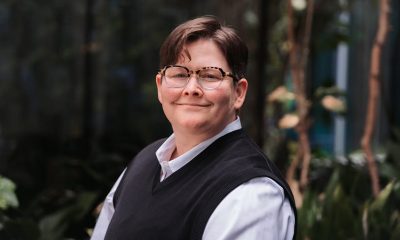
 Features3 days ago
Features3 days agoA blazing champion: Los Angeles LGBT Center’s Terra Russell-Slavin is leading this generation of queer activism
-
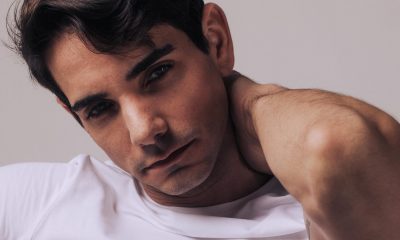
 a&e features4 days ago
a&e features4 days agoJason Caceres is the rising talent you can’t look away from – not that you’d want to
-

 Crime & Justice4 days ago
Crime & Justice4 days agoSoCal gay couple alleges Uber driver refused them service and “chased” them with a bat
-
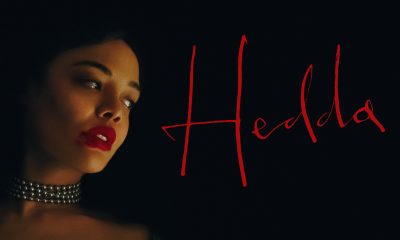
 a&e features11 hours ago
a&e features11 hours agoNia DaCosta and Tessa Thompson on the vital queer chaos of ‘Hedda’
-
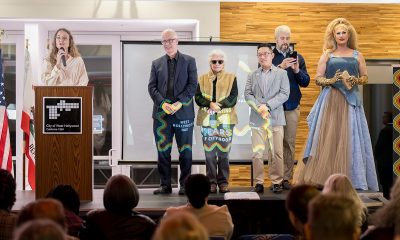
 West Hollywood1 day ago
West Hollywood1 day agoToday, West Hollywood celebrates 41 years of queer cityhood
-
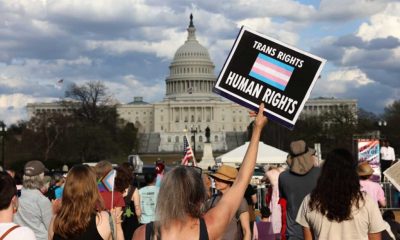
 Transgender2 days ago
Transgender2 days agoChristopher Street Project closed Trans Awareness Week with one of its strongest digital campaigns to date
-
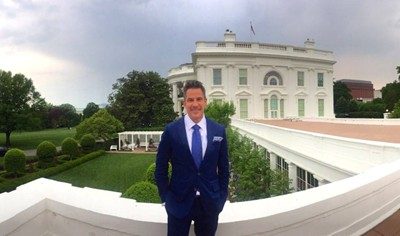
 Features2 days ago
Features2 days agoTrump’s shocking White House East Wing amputation — and the painful fallout Americans won’t ignore
-

 Features11 hours ago
Features11 hours agoWhere craft meets community: Inside Zion Liu’s and Christian Leon’s small biz ‘Here & Always’
